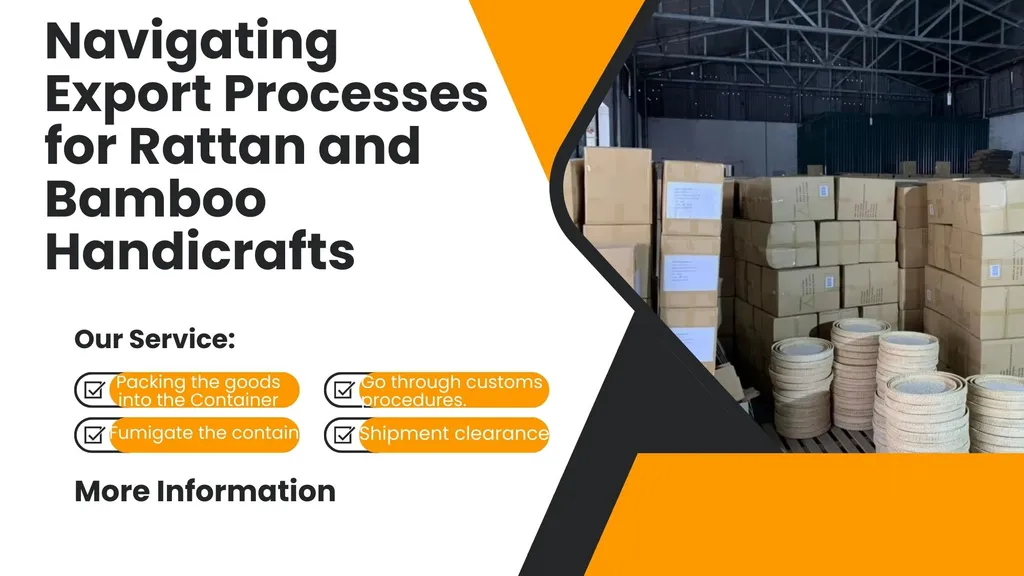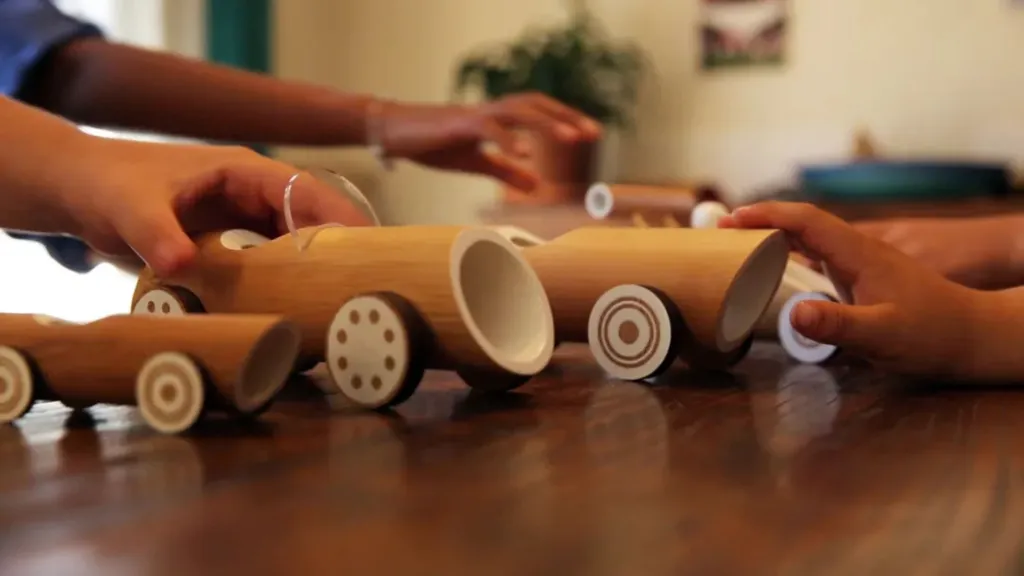Contents

At Ethical Handicraft Manufacturer (EHM), we take pride in crafting sustainable rattan and bamboo products that captivate global markets. Exporting these eco-friendly handicrafts offers immense opportunities but comes with unique challenges. This guide outlines the essentials of navigating the export landscape, ensuring compliance, quality, and market success.
Understanding the Export Landscape
The global demand for sustainable rattan and bamboo handicrafts is soaring, driven by their natural beauty and eco-conscious appeal. However, exporters must navigate a complex web of international regulations, logistics, and diverse market preferences. By mastering these dynamics, EHM leverages Vietnam’s position as the world’s second-largest exporter of these goods, with export values reaching 12 trillion VNĐ in recent years, reflecting a 25% year-on-year growth.
Key Markets for Vietnamese Handicrafts
European Union (EU): Representing 31.44% of Vietnam’s rattan and bamboo exports, the EU (Germany, France, UK, Netherlands) prioritizes sustainability and compliance with the EU Timber Regulation (EUTR). Adhering to these standards ensures market access and consumer trust.
United States: Accounting for 19.5% of exports, the US market demands high-quality, safe products compliant with USDA APHIS guidelines and ISPM 15 standards. Aesthetic and functional designs drive its 26.7% growth in demand.
Japan and Emerging Markets: Japan, with a 9.3% share, values meticulous quality and phytosanitary compliance. Emerging markets like Australia, South Korea, and Canada offer growth potential, requiring tailored approaches to meet diverse preferences.
Compliance and Certifications
Compliance is the cornerstone of successful exports. Key regulations include:
United States: Fumigation or heat treatment per USDA APHIS guidelines and transparent labeling are mandatory.
EU: EUTR compliance requires proof of legally sourced materials, alongside ISPM 15 phytosanitary measures.
Japan: The Plant Protection Act demands rigorous pest control documentation.
Essential certifications—USDA certifications (US), IPPC marks (EU), and Japanese phytosanitary certificates—validate quality and safety, enhancing market credibility.
Export Documentation and Customs Clearance
Seamless exports hinge on meticulous documentation and customs processes:
Key Documents:
- Commercial Invoice: Details transaction specifics.
- Packing List: Lists shipment contents, ensuring accuracy.
- Certificate of Origin: Verifies product origin for tariff benefits.
- Bill of Lading: Confirms shipment details and delivery.
- Health/Safety Certificates: Ensure compliance with international standards.
Customs Clearance Steps:
- Package products to meet international shipping standards.
- Register for plant quarantine to comply with phytosanitary regulations.
- Conduct fumigation to prevent pest contamination.
- Submit accurate documentation for customs assessment.
- Pay duties and obtain clearance certificates.
Logistics and Supply Chain Management
Efficient logistics ensure timely delivery of delicate rattan and bamboo products:
Shipping Options:
- Air Freight: Fast but costly, ideal for high-value goods.
- Sea Freight: Cost-effective for bulk shipments, though slower.
- Road Transport: Flexible for domestic logistics to ports.
Freight Forwarders: These experts coordinate transportation, manage documentation, provide real-time tracking, and mitigate risks through insurance, streamlining the export process.
Overcoming Challenges
Quality Control: Rigorous material selection, production monitoring, and adherence to international standards ensure durability and appeal. Innovative designs tailored to consumer trends enhance competitiveness.
Market Entry Barriers: Certifications like FDA and SGS, sustainable sourcing, and e-commerce platforms like Alibaba help overcome regulatory and logistical hurdles. Multilingual teams and cultural adaptation strengthen market presence.
Strategies for Success
Building a Brand Identity: Craft a compelling narrative around sustainability and craftsmanship. A strong digital presence on platforms like Instagram and Pinterest, paired with professional visuals, fosters consumer trust.
Marketing Tactics: Engage in trade shows, leverage targeted digital ads, and collaborate with eco-friendly influencers to boost visibility. Localized content and e-commerce strategies expand global reach.
Future Outlook
The future of rattan and bamboo exports is bright, with projected growth of 20-30% by 2025, potentially exceeding 24 trillion VNĐ. Emerging markets in Asia, South America, and Africa offer untapped potential, driven by rising demand for sustainable goods. Adopting responsible harvesting, traceable supply chains, and innovative technologies like blockchain ensures EHM remains a leader in ethical, eco-friendly exports.
By mastering compliance, logistics, and strategic marketing, EHM transforms challenges into opportunities, weaving Vietnam’s rattan and bamboo handicrafts into the global tapestry of sustainable craftsmanship.





